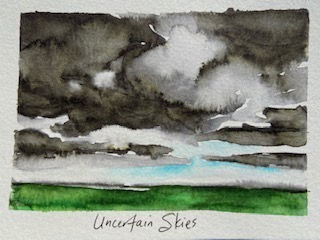Practicing Calm
- Kayli Sarah Penetangorewellness

- May 26, 2020
- 3 min read
I was recently walking near the lake, and the water seemed completely still. It only seemed fitting that as I appreciated this stillness, I was also listening to a podcast on what it means to practice calm (Brene Brown’s“Unlocking Us”- episode “Brene on Anxiety, Calm + Over/Under-Functioning).
Brene describes two types of armour (over or under functioning) that we put on to deal with our anxiety. These two shields often don’t effectively help ourselves, or others, through the tough stuff in life (for more on these types of armour, listen to the podcast episode). She encourages us to shift from these habitual responses to intentionally practicing calmness.
Brene shares that calm is not something that we are, or are not, but rather it is something we can choose to practice in our day to day lives, just like we can choose to practice gratitude or kindness.
Two of the aspects Brene uses to define calm include:
1) Perspective. “Try to be slow to respond and quick to think”. We can ask ourselves if we have the necessary information in order to respond effectively. Often times we only have a piece of the puzzle, and if we have more information before reacting, things may play out very differently.
2) Remaining mindful of the way that calm positively influences the situation. Brene shares that anxiety can be contagious, but so can a sense of calm. Think of a ripple effect in the water- how do we want to influence this situation? Likely our answer is that we want to bring calm to the chaos, rather than adding fuel to a fire.
At Penetangore Wellness, we often like to use the idea of “below calm”.
This means responding, rather than reacting from a place of curiosity and openness. Below calm might look, sound or feel like: a soft voice, slowing things down, curious questions to gather more information, taking some deep breaths, acknowledging that we might not have the answers, or even allowing some time to pass.
Often times, we mirror what is happening in our interactions. If someone begins to get louder, we start getting louder too. Rarely in an upsetting or stressful situation, does mirroring help us to feel better. When we choose to be “below calm”, others are likely to begin to mirror this too.
While we often talk about remaining below calm in the context of how we interact with others, it can also be applied to moments when we are alone and might become hijacked.
If we challenge ourselves to find calm, and share it with others, we are likely to see the choppy lake begin to settle. Whether it is in our interactions with others, or when we are alone, this allows ourselves the opportunity to think more clearly, to evaluate all of the important information and to determine how to wisely respond.
Who can you think of that brings this feeling of calm amongst chaos? For me, it was my parents after I got into my first fender bender, or my colleagues who stay calm, cool and collected when we face the challenges that we inevitably must face.
Interested in other topics by Brene Brown?
Empathy vs Sympathy Video- https://www.youtube.com/watch?v=1Evwgu369Jw
Call to Courage- check it out on Netflix
Books- Daring Greatly, Gifts of Imperfection, Dare to Lead, Rising Strong
Podcast- Unlocking Us, topics include trust, grief, loneliness




Comments